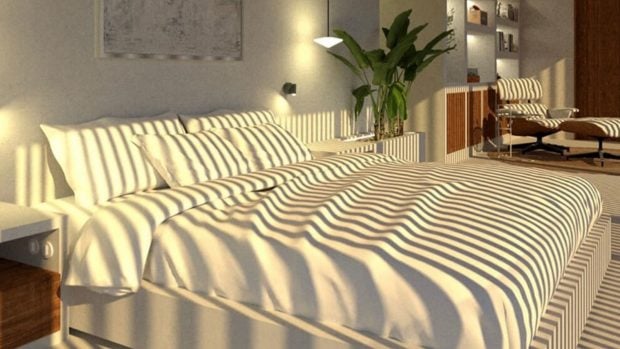Every second, The equivalent of a used clothing truck is incinerated or sent to the landfill, Recently warned the UN Secretary General, António Guterres.
Therefore, finding measures to stop the impact of the textile industry, One of the most pollutants in the worldwhich implies the generation of more than 2,000 million tons of waste and the consumption of 215 billion liters worldwide each year.
Buy clothes in second -hand stores, donate the garments that we no longer want social organizations, or take them to a recycling plant, where textile fibers that can be reused will be removed to manufacture new garments, They are some of these solutions that we usually think When we want to recycle our used clothes.
Textile recycling
Another possibility is to join the tendency of DIY (Do it yourselffor its acronym in English)a “do it yourself” that invites us to give new use to our old pants, t -shirts, shirts, etc. As raw material to make new garments or accessories, as if we were our own fashion designers.
All these alternatives have in common that they focus on satisfying our clothing needs more sustainably, but without looking at other areas not related to the textile industry. Because yes, there are other solutions that are based on the recycling of clothing, but whose result They have nothing to do with how we dress.
Textile bricks
A remarkable example is that of Fabbrick’s bricks, a company created by the Parisian architect Clarisse Merlet. These bricks are obtained From textile waste and ecological glue of natural origin.
«A Fabbrick brick is prepared With about two shirts that, otherwise, would have gone to the trash »explains Merlet herself in this video.
https://www.youtube.com/watch?v=3urbgmf1554
Preferably, cotton garments, jeans and tissues are used that are selected by colors and types of material. For example, the denim fabric, being basically composed of cotton, sE uses regularly because it is a good insulator.
Once the material is selected, it is mixed with the echo glue, made with natural and non -polluting ingredients. This glue also ensures that bricks are waterproof and fire resistant. Next, bricks are compressed with a manual use machine, without resorting to any energy.
These bricks can be used For decoration and also to build partition walls and furniture.
Design furniture
«The average life of a garment is two years, that of a concrete furniture, more than 100 years »they assure Rudi design furniture website.
Its founder is Elena Hinrichs, a successful professional in the fashion sector who after more than two decades of career decided to undertake this project precisely for Acarry a solution to the problem of textile waste.
Rudi reuses these waste, taking them out of the traditional textile industry circuit To create a new material, resistant and durable, valid to produce all kinds of furniture, spaces and construction materials.
Characteristics very similar to those of concrete
From the company they claim that its new material has some characteristics very similar to those of concrete. With this raw material they manufacture elegant design furniture, and fashion.
Another associated benefit is The reduction of the carbon footprint in 330 tons per monthaccording to calculations based on the assessment made by ECO TLC, integrated French textile management system.
In addition to producing furniture, the brand is also dedicated to the interior design of housing, offices, hotels and businesses, also based on the use of its innovative material.


Green hydrogen
Textile fiber can also serve as a source of sustainable energy. Therefore, the Technological Institute of Energy (ITE), association of companies dedicated to the challenges of the energy transition, launched last year the Tex2energy project, which aims to generate clean energy with textile urban and industrial waste.
The technology that is developing consists, basically, in a process of thermochemical valorization that releases synthesis gas, rich in hydrogen, from used clothes and other textile waste. This gas will feed a solid oxide fuel battery with the purpose of producing electricity.
In addition to energy, it is also expected to obtain Other added value products such as biocarbon or bioaceite. Another objective of the initiative is to calculate the level of decarbonization, in terms of CO₂ reduction, which can be achieved through the developed procedure.
Likewise, the degree of sustainability, efficiency and energy cost throughout the entire process of textile material conversion into renewable energy will be analyzed.










